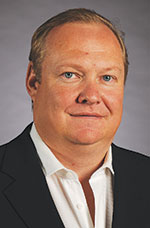

Do you want your control room on the estate or run from some remote location? This is a question many estates ask themselves quite regularly when considering budget, technology and manpower concerns.
Some smaller estates may never consider these options as they feel a control room is way beyond their financial capabilities, but is that still the case with all the new technology we have at our disposal today?
Hi-Tech Security Solutions asked three companies well versed in offering control room services – either remote, local, or both – what’s happening in the estate monitoring and/or management market and what the best options are for residential estates. Moreover, we wanted to find out what control room services are on offer today and what an estate needs to consider to make its control room deliver the value the HOA (Homeowners’ Association) requires.

Ian Downie, group executive – sales and marketing at Xone Integrated Security, says many estates still link their individual homes to on-site control rooms as they find this is a more efficient service with better on-the-ground understanding of the individual risk profiles. They will sometimes also link to an armed response company for additional backup, if required.
“However remote monitoring can allow for a very cost effective, pared down service,” Downie adds. “This remote control room can monitor electric fences, gates, analytics, automated rule activation, fire detection, activation of sirens, information analytics and independent audits.”
When it comes to remote, or off-site monitoring, “the beauty of technology is that it is scalable and the appropriate solutions can be based on the requirement, size and budget of an estate,” states Rynhardt Steenkamp, East Coast communications manager at Fidelity ADT. “A variety of remote monitoring services are therefore available to any estate of any size.”
Steenkamp adds that the biggest change in monitoring has been the fact that most modern intruder detection systems are now linked to control rooms through some form of Internet Protocol (IP) communication. This allows for the integration of many devices that could assist in the detection, surveillance and identification of intruders. In addition, he says that due to this technology being compatible with cellphones, control rooms are able to get system alert notifications to residents much quicker than in the past.
“Modern intruder detection systems are no longer a standalone system but rather a piece of an integrated network of systems using CCTV, access control and responses designed to identify threats and stop criminals.”
Fidelity ADT offers security solutions which include standard to advanced intruder detection systems as well as micro single-camera monitoring or large-scale estate and area monitoring. “The immediate benefit is the fact that any intruder can instantly be detected and recorded by a dedicated control room. There is also a cost saving component due to the reduced on-site personnel in the case of purely remote solutions,” he adds.

Connected and intelligent
Rudi Potgieter, executive head of Guardian Eye at Vox, believes “… we are slowly but steadily being catapulted into this connected world of technology. A world where devices speak to each other, making autonomous decisions with no emotions involved, based purely on AI (artificial intelligence), machine learning and rule sets. We are still quite far away from doing away completely with the boots on the ground (if that ever happens), but the advances in personal security being driven by technology are extremely exciting.
“Alarms in the control room are being filtered and enriched by sensors, cutting down on false events, but also speeding up response time due to the accuracy of data. The meshed security approach is neither secret nor new, but the exponential evolution we currently see in the worlds of IoT sensors, rich video alerts based on AI and machine learning, and potentially incorporated into technologies such as autonomous drones, starts making for foolproof systems out there.”
Vox specialises in off-site monitoring. Potgieter explains that the company was one of the pioneers of traditional off-site monitoring 10 to 15 years ago, but has since evolved for businesses to use technology to drive efficient outcomes. “We see the sensor, and here I refer to a camera, beam, seismic sensor, etc., as a mere means to an end, and focus more on driving the desired outcome than competing with the plethora of hardware installers out there.”
He adds that as technology in general moves to the ‘as-a-service’ model over the years, so will security. “No one needs to own hardware, but everyone wants results. We at Guardian Eye are positioning ourselves as the leader in selling these outcomes as a service.”
Meet the requirements of each estate
One of the consequences of the technical world we live in is that it enables people to ‘pick and choose’ precisely what they want. For example, you can choose to backup your visitor management system to a USB drive, a portable hard drive, another PC or to the cloud. Each has its pros and cons that the decision maker should be aware of. These choices enable service providers to meet the needs of clients more effectively and at scale.
Steenkamp explains: “All our estate service offerings are tailor-made to meet the unique needs of our customers and the details of the security solution will depend on their specific requirements. It is indeed possible to integrate on-site services including guarding personnel, CCTV and access control, combined with remote services or a fully standalone remote solution.
“The services that Fidelity ADT specifically offers varies from private intruder detection systems that efficiently give a simple notification of an activation to both the home owner through our app installed on their cellphone, simultaneously notifying our control room, through to other remote monitoring services such as images being sent to the relevant personnel or through live monitoring.”
Xone offers on-site and remote management services for estates, or a combination thereof. Downie notes that there are a number of services the company can include in its deliverables. These include:
• CCTV monitoring.
• Black screen monitoring.
• Alarm monitoring from alarm systems, fences, gates, fire systems, beams and multiple other triggers.
• Access control.
• Monitoring of analytics.
• Incident management systems.
• Maintenance monitoring.
• Cellular technology input by a resident or staff member.
• Spatial analysis.
• Detailed reporting.
• Audit of sites.
• Virtual patrols.
Ruled by a cable
However, before one gets there, there is the question of communications. Almost all the services the three companies offer depend on reliable communications, and the figure sits at 100% when talking about services managed remotely. Fortunately, we have seen fibre, LTE and soon 5G networks springing up all over the country, making reliable communications (even for multiple high-resolution camera streams) possible.
But do estates want to have the burden of running their own network when it can also be provided as part of a service from a supplier? In the same way an estate would sign a maintenance contract and/or SLA (service-level agreement) to ensure its security systems – such as surveillance cameras or access systems at the gate – are fully functional at all times and serviced regularly, leaving the wired or wireless network to someone else may be the best option as we now have a relatively competitive market that rewards good customer service.
Of course, that question is putting the cart before the horse. Downie advises that the single most important facet is first to understand what you are trying to achieve before you begin to build your infrastructure – no matter how you decide to do it.
Issues to consider are many and varied, and include “… what systems you want monitored: analytics, CCTV, fire detection, fence, etc. One then needs to ask what you want to achieve with each subset. For example, if you want to view 30 cameras, is that only when they are triggered by an analytics alarm activation and if so, what is the average number of nuisance alarms per day?”
Once this is understood you will understand more of the complexity and will be able to make better decisions about issues like:
• The head-end with sufficient capability, features, storage and integration.
• Makeup of fibre infrastructure.
• Bandwidth required from the estate to the remote control room to perform these functions.
• Amount and frequency of time required by operators to perform the functions as requested.
• The structure of the SLA with clearly defined standard operating procedures.
• A quality incident management system for detailed reporting and analysis.
• Sound management to ensure your supplier is reliably doing what they have claimed.
Steenkamp adds that no matter what selection or decisions the estate makes, he would also recommend power generators for all systems with the ability to handle any power interruptions at any time.
When it comes to infrastructure, Potgieter isn’t shy to state: “Stay away from owning infrastructure! The only thing constant is change and you do not want to be stuck with dated technology. Choose a partner that can deliver this as a service and ensure that you enter into a mutually beneficial contract which gives you continuous access to cutting edge technology.”
And while on the subject of networks, he also warns estates to ensure their chosen partner understands cybersecurity as well as they do physical security. “There’s no use having a world-class security deployment that has not been secured.”
With all this done, however, the estate still has to circle back to the original question and decide if it is comfortable with a remote control room, or wants people on site and at hand.
Horses for courses
“I think body corporates and homeowners’ associations are warming up to the idea of remote services,” states Potgieter. “In larger estates you will never completely replace manpower with technology, but customers are starting to see the benefits of having an independent off-site monitoring business, remotely watching the estate. Not only does it remove some risk off the premises, by not having critical events stored on-site only, but also adds a layer of security by having an impartial, independent set of eyes monitoring your security. It’s the old question of who’s watching the watchers.”
Some estates use only remote monitoring. Downie, however, says this can work, but is never as efficient as on-site monitoring, or even better, a combination thereof. “The hands-on operational knowledge adds significant value and greater volumes of task-driven focus can be applied.”
Of course, the question is not that simple. Steenkamp says: “We have found that there is a strong need for having manned security services on-site due to the level of threat locally. Although technology is an invaluable asset in the detection, capturing and prosecution of criminals, the physical work is still required by the officers to perform an arrest. In such cases, speed is always of the essence and it makes sense to have personnel on location with 24/7 backup by an armed response team.”
At the end of the day, any estate should have a control room, if it can afford one. The question of whether it should be on-site or not depends on finances, but also what the estate wants to accomplish through its control room. Does it want a central nerve centre that handles security and operational issues, or a monitoring station acting as additional oversight to the security team, or does it want something specifically tailored to the estate and its residents? Every estate will have their own requirements; the key is discovering what you want and all the bits and pieces you will need to put it together before making a decision you will have to live with for a long time.”
For more information contact:
• Fidelity-ADT, +27 11 697 7271, [email protected], www.adt.co.za
• Xone Integrated Security, +27 82 906 7600, [email protected], www.xone.co.za
• Vox Telecom, +27 87 805 0000, [email protected], www.voxtelecom.co.za
| Email: | [email protected] |
| www: | www.xone.co.za |
| Articles: | More information and articles about Xone Integrated Security |
| Tel: | +27 87 805 0000 |
| Email: | [email protected] |
| www: | www.guardianeye.co.za |
| Articles: | More information and articles about Guardian Eye |
© Technews Publishing (Pty) Ltd. | All Rights Reserved.